Mabamba Swamp and Wetland is one of the places you go to and realize just how blessed Uganda is by nature. Though a relatively small country, Uganda is one of the best countries for bird watching in the world. The sheer variety and density of bird species is truly amazing. The Mabamba bay Swamp is just one of the many important birding areas in Uganda. Mabamba (meaning lungfish swamp in the Luganda dialect) swamp is located in a convenient place close to Kampala city and Entebbe town allowing birders to spot many of Uganda’s famous birds without having to go to the remoter parks.
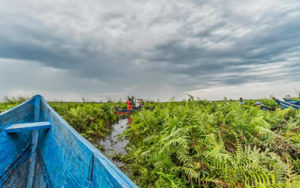 Mabamba Bay Wetland is one of the vast swamps found in Lake Victoria. It is located close to Entebbe town (40km) and Kampala city in a small village in Kasanje. The main economic activities among the communities living close to the wetland are hunting, fishing and and mining. The Mabamba Swamp is more renowned for its amazing bird collection (Over 260 species recorded). It is one of the top tourist attractions in Entebbe town. In 2006, the swamp was chosen as a Ramsar Site and wetland of international importance because of the rare and attractive bird species like the Papyrus Yellow Warbler, Shoebill Stork (Balaeniceps rex), Blue Swallow (Hirundo atrocaerulea) and Sitatunga (swamp antelope) among others. The Ramsar Convention on wetlands is an intergovernmental treaty that champions the conservation, wise use and safeguarding of wetlands and their treasures. The treaty came into force in 1971 in the city of Ramsar (Iran).
Mabamba Bay Wetland is one of the vast swamps found in Lake Victoria. It is located close to Entebbe town (40km) and Kampala city in a small village in Kasanje. The main economic activities among the communities living close to the wetland are hunting, fishing and and mining. The Mabamba Swamp is more renowned for its amazing bird collection (Over 260 species recorded). It is one of the top tourist attractions in Entebbe town. In 2006, the swamp was chosen as a Ramsar Site and wetland of international importance because of the rare and attractive bird species like the Papyrus Yellow Warbler, Shoebill Stork (Balaeniceps rex), Blue Swallow (Hirundo atrocaerulea) and Sitatunga (swamp antelope) among others. The Ramsar Convention on wetlands is an intergovernmental treaty that champions the conservation, wise use and safeguarding of wetlands and their treasures. The treaty came into force in 1971 in the city of Ramsar (Iran).
Because of this international recognition (among others), the Mabamba Swamp has become an Important Bird Area (IBA) helping attract alot of birders to Uganda. It is one of the best places for birding safaris in Uganda. Because of its location close to the Entebbe international airport, it is an ideal starting point for those interested in a long safari in Uganda. 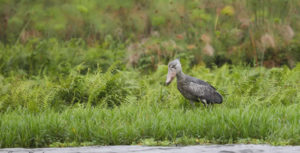 The key attraction is the Shoebill Stork. Along with the Murchison Falls National Park, the Mabamba Swamp is the best place to spot the Shoebill Stork. In Mabamba and Murchison Falls National Park, Shoebill Storks can be sighted throughout the day. Mabamba wetland is not all about Shoebill Storks, it is a sanctuary to four threatened species including the Papyrus Gonolek, Blue Swallow, Pallid Harrier and White-Winged Warbler. Other species found in the swamp include the Yellow-throated Greenbul, Yellow-rumped Tinkerbird, Yellow-billed Tinkerbird, Yellow-billed Ducks, Yellow-backed Weaver, Yellow warble, Yellow Wagtail, Yellow-Billed Stork, Yellow-billed duck, Yello-billed Kite, Woodland Kingfisher, Wood Sandpiper, Winding Cistocola, White-winged Warbler, White-winged Black Terns, White-throated Bee-eater, White-shouldered Tit, White-faced Whistling-duck, White-browed Cuckoo,
The key attraction is the Shoebill Stork. Along with the Murchison Falls National Park, the Mabamba Swamp is the best place to spot the Shoebill Stork. In Mabamba and Murchison Falls National Park, Shoebill Storks can be sighted throughout the day. Mabamba wetland is not all about Shoebill Storks, it is a sanctuary to four threatened species including the Papyrus Gonolek, Blue Swallow, Pallid Harrier and White-Winged Warbler. Other species found in the swamp include the Yellow-throated Greenbul, Yellow-rumped Tinkerbird, Yellow-billed Tinkerbird, Yellow-billed Ducks, Yellow-backed Weaver, Yellow warble, Yellow Wagtail, Yellow-Billed Stork, Yellow-billed duck, Yello-billed Kite, Woodland Kingfisher, Wood Sandpiper, Winding Cistocola, White-winged Warbler, White-winged Black Terns, White-throated Bee-eater, White-shouldered Tit, White-faced Whistling-duck, White-browed Cuckoo, 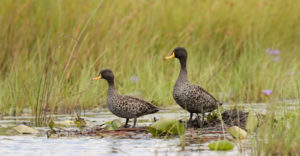 White-browed Coucal, Whiskered Terns, Whinchat, Weyn’s Weaver, Weaver birds, Water Thicknee, Violet-backed Sterling, Village Weaver, Veilots’ Black Weaver, the Blue Swallow, Tawny-flanked Prinia, Tawny Eagle, Tambourine Dove, Swamp Flycatcher, Stripped Kingfisher, Squacco heron, Spur-winged, Spur-winged Lapwing, Spur-winged Geese, Speckled Mousebird, Slender-billed Weaver, Slender-billed Gull, Shining Blue Kingfisher, Sand Martin, Sand Martin, Saddle-billed Stork, Ruppell’s Long-tailed Sterling, Rufous-napped Lark, Rufous-bellied Herons, Ross’ Turaco, Red-shouldered Cuckoo Shrike, Red-headed Love-bird, Red-eyed Dove, Red-chested Cuckoo, Red-billed Fire-finch, Pygmy Geese, Purple
White-browed Coucal, Whiskered Terns, Whinchat, Weyn’s Weaver, Weaver birds, Water Thicknee, Violet-backed Sterling, Village Weaver, Veilots’ Black Weaver, the Blue Swallow, Tawny-flanked Prinia, Tawny Eagle, Tambourine Dove, Swamp Flycatcher, Stripped Kingfisher, Squacco heron, Spur-winged, Spur-winged Lapwing, Spur-winged Geese, Speckled Mousebird, Slender-billed Weaver, Slender-billed Gull, Shining Blue Kingfisher, Sand Martin, Sand Martin, Saddle-billed Stork, Ruppell’s Long-tailed Sterling, Rufous-napped Lark, Rufous-bellied Herons, Ross’ Turaco, Red-shouldered Cuckoo Shrike, Red-headed Love-bird, Red-eyed Dove, Red-chested Cuckoo, Red-billed Fire-finch, Pygmy Geese, Purple 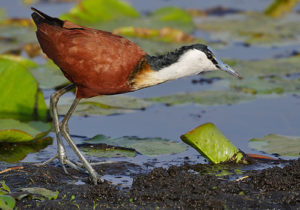 Heron, Pint-tailed Whyda, Pink-backed Pelican, Pied Wagtail, Pied Kingfishers, Papyrus yellow warbler, Papyrus Gonolek, Papyrus Canary, Pallid Harrier, Orange Weaver, Olivaceous Warbler, Nothern Brown-throated Weather, Mosque Swallow, Marsh Harrier, Malachite Kingfisher, Long-toed Lapwings, Long-tailed Cormorant, Long-Crested Eagle, Long tod lapwig blover, Little Stilt, Little Egret, Little bee-eater, Levaillant’s Cuckoo, Lesser Jacana, Intermediate Egret, Harmerkop, Hadada Ibis, Gull-billed Terns, Grosbeak Weaver, Grey-rumped, Grey-Headed Sparrow, Grey-headed Kingfisher, Grey-headed Gulls, Grey-crowned Crane, Grey Woodpecker, Grey Wagtail, Grey Parrot, Grey Heron, Green Cuckoo, Great White Pelican, Great White Egret, Great Cormorant, Great Blue Turaco, Grassland Pipit, Goliath Herons, Glossy Ibis, Fulvous Whistling-duck, Fork-tailed Drongo, Fork-tailed Drongo, Fly catcher, Flappet Lark, Feral Pigeon, Fan-tailed Widowbird, Eurasian Hobby,
Heron, Pint-tailed Whyda, Pink-backed Pelican, Pied Wagtail, Pied Kingfishers, Papyrus yellow warbler, Papyrus Gonolek, Papyrus Canary, Pallid Harrier, Orange Weaver, Olivaceous Warbler, Nothern Brown-throated Weather, Mosque Swallow, Marsh Harrier, Malachite Kingfisher, Long-toed Lapwings, Long-tailed Cormorant, Long-Crested Eagle, Long tod lapwig blover, Little Stilt, Little Egret, Little bee-eater, Levaillant’s Cuckoo, Lesser Jacana, Intermediate Egret, Harmerkop, Hadada Ibis, Gull-billed Terns, Grosbeak Weaver, Grey-rumped, Grey-Headed Sparrow, Grey-headed Kingfisher, Grey-headed Gulls, Grey-crowned Crane, Grey Woodpecker, Grey Wagtail, Grey Parrot, Grey Heron, Green Cuckoo, Great White Pelican, Great White Egret, Great Cormorant, Great Blue Turaco, Grassland Pipit, Goliath Herons, Glossy Ibis, Fulvous Whistling-duck, Fork-tailed Drongo, Fork-tailed Drongo, Fly catcher, Flappet Lark, Feral Pigeon, Fan-tailed Widowbird, Eurasian Hobby, 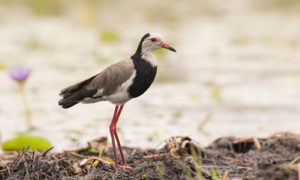 Eastern Grey Plantain Eater, Double Toothed Barbet, Crowned Hornbill, Comrants, Common Waxbill, Common Stonechat, Common Sqacco Heron, Common Sandpiper, Common Moorhens, Common Greenshank, Common Bulbul, Cattle Egret, Carruther’s Cisticola, Brown Snake-Eagle, Brown Parrot, Blue-headed Cuckoo, Blue-headed Coucal, Blue-cheeked Bee-eater, Blue Swallow, Blue headed coucal, Blue Breasted Bee-eater, Black-winged Stilt, Black-headed Weavers, Black-headed Heron, Black-faced Rufous Warbler, Black-crowned Waxbill, Black-crowned Night Heron, Black- headed weavers, Black Headed Gonolek, Black Headed Gonolek, Black Egret, Black Crake, Banded Martin, Ashy Flycatcher, Ashy Flycatcher, Angola Swallows, Afrikan Jakana, African water rail, Pallid Harrier, African Water Rail, African Pygmy Goose, African Purple Swamp-hen, African Pigmy Goose, African Pied Wagtail, African Marsh Harrier, African Jacana, African Hoopoe, African Green Pigeon, African Fish Eagle, African Firefinch and African common Moorhen.
Eastern Grey Plantain Eater, Double Toothed Barbet, Crowned Hornbill, Comrants, Common Waxbill, Common Stonechat, Common Sqacco Heron, Common Sandpiper, Common Moorhens, Common Greenshank, Common Bulbul, Cattle Egret, Carruther’s Cisticola, Brown Snake-Eagle, Brown Parrot, Blue-headed Cuckoo, Blue-headed Coucal, Blue-cheeked Bee-eater, Blue Swallow, Blue headed coucal, Blue Breasted Bee-eater, Black-winged Stilt, Black-headed Weavers, Black-headed Heron, Black-faced Rufous Warbler, Black-crowned Waxbill, Black-crowned Night Heron, Black- headed weavers, Black Headed Gonolek, Black Headed Gonolek, Black Egret, Black Crake, Banded Martin, Ashy Flycatcher, Ashy Flycatcher, Angola Swallows, Afrikan Jakana, African water rail, Pallid Harrier, African Water Rail, African Pygmy Goose, African Purple Swamp-hen, African Pigmy Goose, African Pied Wagtail, African Marsh Harrier, African Jacana, African Hoopoe, African Green Pigeon, African Fish Eagle, African Firefinch and African common Moorhen.
About the Shoebill Stork and Birding Tours in Mabamba Swamp
Known locally as “Bbulwe”, the Shoebill Stork gets its name from it huge shoe-shaped bill. The Shoebill stork is the most sought out bird in Uganda. It is a shy and intriguing bird with a mysterious physical appearance. Its most striking feature is a massive, uneven, large and yellow colored bill. Shoebill Storks are considered by some to be an ugly bird which looks like a creature straight out of the Jurassic age. Regardless what some think, tourists and seasoned birders find them very fascinating. Hundreds of birders flock to Uganda purposely to see these large birds.
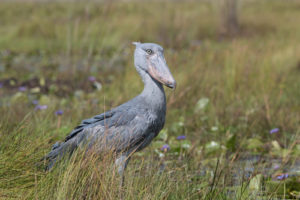 Shoebills are found in the papyrus swamps of Sub-Saharan Africa including DR Congo, Zambia, Tanzania, Uganda and Sudan. Uganda has about 1000 individuals. The Shoebill Storks in Uganda can also be sighted in Queen Elizabeth National Park (Ishasha Sector), Nabajuzi Swamp (in Masaka), Murchison Falls Park, Ziwa Rhino Sanctuary, Lake Mburo National Park, Semliki Wildlife Reserve and around Lake Kyoga. Shoebill Storks love Lungfish but will also feed on smaller water birds, water snakes, frogs, lizards, Turtles, Crocodiles (young), Snails and Rodents. Their favorite food in Mabamba is Lungfish. The fish thrive here because many Baganda people do not eat them. One of the Baganda clans is named after the lungfish.
Shoebills are found in the papyrus swamps of Sub-Saharan Africa including DR Congo, Zambia, Tanzania, Uganda and Sudan. Uganda has about 1000 individuals. The Shoebill Storks in Uganda can also be sighted in Queen Elizabeth National Park (Ishasha Sector), Nabajuzi Swamp (in Masaka), Murchison Falls Park, Ziwa Rhino Sanctuary, Lake Mburo National Park, Semliki Wildlife Reserve and around Lake Kyoga. Shoebill Storks love Lungfish but will also feed on smaller water birds, water snakes, frogs, lizards, Turtles, Crocodiles (young), Snails and Rodents. Their favorite food in Mabamba is Lungfish. The fish thrive here because many Baganda people do not eat them. One of the Baganda clans is named after the lungfish.
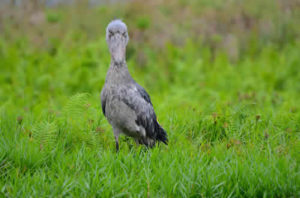 The Shoebill Stork is a solitary bird. Two pairs only get together during the breeding season. The breeding season generally occurs during the dry season – perhaps to prevent the nests from getting damaged by heavy floods. Females lay between one to three eggs. The male and female both share incubation roles until the chicks hatch. After hatching, the pair has a task of feeding their young until they are can look for food on their own. It takes between 3 to 4 years for the young ones to start breeding. Usually only one survives up to adulthood (the strongest one). Adult Shoebills weigh about 14 pounds and can live for more than 50 years. You have a more comprehensive article about the Shoebill Stork.
The Shoebill Stork is a solitary bird. Two pairs only get together during the breeding season. The breeding season generally occurs during the dry season – perhaps to prevent the nests from getting damaged by heavy floods. Females lay between one to three eggs. The male and female both share incubation roles until the chicks hatch. After hatching, the pair has a task of feeding their young until they are can look for food on their own. It takes between 3 to 4 years for the young ones to start breeding. Usually only one survives up to adulthood (the strongest one). Adult Shoebills weigh about 14 pounds and can live for more than 50 years. You have a more comprehensive article about the Shoebill Stork.
How to Reach Mabamba Swamp and Wetland
Mabamba bay swamp can be accessed from both Kampala and Entebbe. Those coming from Entebbe can follow the old Entebbe- Kampala road and branch off from Kisubi. From Kisubi, one drives to Nakawuka then Kasanje before reaching Mabamba. Those coming from Kampala have two options. The first is to take a taxi from the new taxi park to Kasanje trading centre. After reaching Kasenje trading centre, one can hire a boda boda (motorcycle taxi) up to Mabamba which is 13.5 km away. Alternatively one can use the Masaka road and branch off after about 30 kilometers to Buyege. The distance from Buyege to Mabamba is about 22 kilomeres.
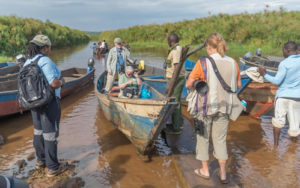 Instead of using the road as described above, a more convenient and easy way to reach the swamp from Entebbe town is by taking a speed boat through Lake Victoria. Using the lake route is more adventurous and allows one to marvel at the beautiful Lake Victoria while bypassing Entebbe town and the airport. Using a speed boat to the starting point in Mabamba takes between 45 to 50 minutes. The speedboats can be hired from some hotels in Entebbe town or at the Entebbe sailing club. The boats are in great condition, comfortable and with life jackets. However these large speed boats are not suitable for navigating through the papyrus swamps. Once you get near the Mabamba wetland, you need to prepare to board smaller canoes that are used to navigate through the papayrus swamps.
Instead of using the road as described above, a more convenient and easy way to reach the swamp from Entebbe town is by taking a speed boat through Lake Victoria. Using the lake route is more adventurous and allows one to marvel at the beautiful Lake Victoria while bypassing Entebbe town and the airport. Using a speed boat to the starting point in Mabamba takes between 45 to 50 minutes. The speedboats can be hired from some hotels in Entebbe town or at the Entebbe sailing club. The boats are in great condition, comfortable and with life jackets. However these large speed boats are not suitable for navigating through the papyrus swamps. Once you get near the Mabamba wetland, you need to prepare to board smaller canoes that are used to navigate through the papayrus swamps.
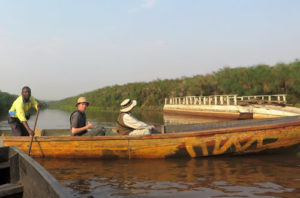 On arrival at the starting point, expect to find many birding Guides and fishermen waiting to escort you deep into the wetland to spot the birds. The boatmen and bird guides are well organized. They have a leader who speaks on their behalf. It is this spokesperson who assigns a boatman and guide to visitors. The canoes can only take three birders (excluding the guide and boat driver). You need to first pay a community charge of about $7 at their small office. The boat and Guide together cost about $35. You need to move with a life Jacket or request for one because many of the boats do not have them. The owners of these boats and birding guides are locals from the nearby communities. By paying for their services, you are giving back to the community and helping save the birds and other creatures in the wetland. People are less inclined to destroy something that is of a benefit to them.
On arrival at the starting point, expect to find many birding Guides and fishermen waiting to escort you deep into the wetland to spot the birds. The boatmen and bird guides are well organized. They have a leader who speaks on their behalf. It is this spokesperson who assigns a boatman and guide to visitors. The canoes can only take three birders (excluding the guide and boat driver). You need to first pay a community charge of about $7 at their small office. The boat and Guide together cost about $35. You need to move with a life Jacket or request for one because many of the boats do not have them. The owners of these boats and birding guides are locals from the nearby communities. By paying for their services, you are giving back to the community and helping save the birds and other creatures in the wetland. People are less inclined to destroy something that is of a benefit to them.
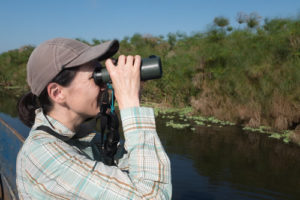 As soon as the boat starts moving into the reeds, pay attention on both sides of the narrow pathways and in the air. Your guide and boatman will help you get close to the birds by navigating through the papyrus and lily pads. After rowing for a few minutes, the narrow papyrus reeds open up to reveal flat grassy swamps. Have your binoculars and camera ready. The number of birds here will surprise you if you are not prepared. Watch out for the bee-eaters, kingfishers and other species. Don’t miss the beautiful butterflies and lotus flowers. The best time to find the Shoebills is during the morning hours when they go out to feed. Talking photos of the Storks is easier compared to many of the other bird species. This is because they stay still for long periods as they observe the movement of fish, frogs and other prey before making a lightning strike. They support themselves by standing on floating reeds.
As soon as the boat starts moving into the reeds, pay attention on both sides of the narrow pathways and in the air. Your guide and boatman will help you get close to the birds by navigating through the papyrus and lily pads. After rowing for a few minutes, the narrow papyrus reeds open up to reveal flat grassy swamps. Have your binoculars and camera ready. The number of birds here will surprise you if you are not prepared. Watch out for the bee-eaters, kingfishers and other species. Don’t miss the beautiful butterflies and lotus flowers. The best time to find the Shoebills is during the morning hours when they go out to feed. Talking photos of the Storks is easier compared to many of the other bird species. This is because they stay still for long periods as they observe the movement of fish, frogs and other prey before making a lightning strike. They support themselves by standing on floating reeds.
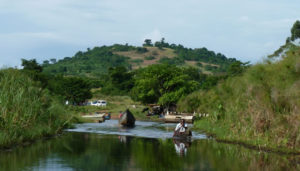 The chances of seeing the Shoebills in Mabamba are very high. One of the reasons for the high success rate is the great corporation and teamwork among the Birding guides. When there are several visitors at the bay, the guides spread out and head to different sections of the swamp. They are in constant communication and any who spots the Shoebills first alerts the others about their presence. Within no time all the boats gather at the same place stealthily to allow birders spot the birds. After locating the Shoebill and spotting enough of the birds, you should head back to the lake and find the larger boat waiting to take you back to your hotel. As you leave the Mabamba wetland, you might get lucky to spot more shoebills along the swampy shores of the lake or nearby lagoons.
The chances of seeing the Shoebills in Mabamba are very high. One of the reasons for the high success rate is the great corporation and teamwork among the Birding guides. When there are several visitors at the bay, the guides spread out and head to different sections of the swamp. They are in constant communication and any who spots the Shoebills first alerts the others about their presence. Within no time all the boats gather at the same place stealthily to allow birders spot the birds. After locating the Shoebill and spotting enough of the birds, you should head back to the lake and find the larger boat waiting to take you back to your hotel. As you leave the Mabamba wetland, you might get lucky to spot more shoebills along the swampy shores of the lake or nearby lagoons.
Important information about Birding tours in Mabamba
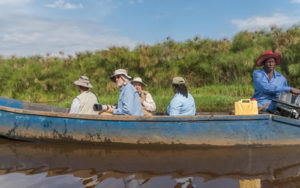 Birding tours are arranged daily and takes about 4 hours. Full day birding can also be arranged on request. The period between September and March are the best for birding. There is a lot of activity within the wetland as migratory birds arrive from Europe. It is important to book a tour of Mabamba swamp a day in advance for better planning. Your tour company or private driver should pick you up very early in the morning from your hotel or residence. A one day birding tour in Mabamba costs about $400 per person. For the best birdwatching experience, move with a backpack, packed food (in case you get hungry), binoculars, insect repellents, a hat, sunscreen, a rain jacket, trousers and long-sleeved shirts.
Birding tours are arranged daily and takes about 4 hours. Full day birding can also be arranged on request. The period between September and March are the best for birding. There is a lot of activity within the wetland as migratory birds arrive from Europe. It is important to book a tour of Mabamba swamp a day in advance for better planning. Your tour company or private driver should pick you up very early in the morning from your hotel or residence. A one day birding tour in Mabamba costs about $400 per person. For the best birdwatching experience, move with a backpack, packed food (in case you get hungry), binoculars, insect repellents, a hat, sunscreen, a rain jacket, trousers and long-sleeved shirts.
Other things to do and look out for while visiting the Mabamba swamp
Watching Butterflies: Whereas birdwatching is the main highlight of a tour of the Mabamba wetland; the countless butterfly species also catch the eye. The Mabamba swamp has over 200 species of butterflies. The most common species are the Bicyclus sebetus, Acraea consanquine, Acraea aganice, Achaea aurivilli and Abisaraneavei.
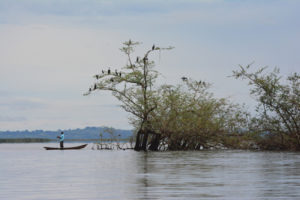 Spot fishing: Before tourism became more prominent, the main activity in Mabamba was fishing. Fishing is still the main economic activity in the area and the most popular species are the Tilapia, mudfish, lungfish and the large Nile Perch. There are several fishermen around the area. You can join one of them or watch them from afar. If you wish to join them, then you can go with your own equipment or make do with one of the locally made hooks and rods.
Spot fishing: Before tourism became more prominent, the main activity in Mabamba was fishing. Fishing is still the main economic activity in the area and the most popular species are the Tilapia, mudfish, lungfish and the large Nile Perch. There are several fishermen around the area. You can join one of them or watch them from afar. If you wish to join them, then you can go with your own equipment or make do with one of the locally made hooks and rods.
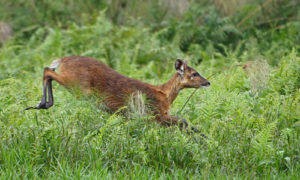 Spotting the Sitatunga antelope: The Mabamba swamp is an important sanctuary for the Sitatunga. While on a birdwatching tour in the vast swamp, it is possible to encounter these elusive antelopes. Their numbers have dwindled in the recent past because of uncontrolled poaching. The poachers expose and catch them by burning down their hiding places – the marshes. There are efforts by the government and other Wildlife conservationists to protect them through community sensitization.
Spotting the Sitatunga antelope: The Mabamba swamp is an important sanctuary for the Sitatunga. While on a birdwatching tour in the vast swamp, it is possible to encounter these elusive antelopes. Their numbers have dwindled in the recent past because of uncontrolled poaching. The poachers expose and catch them by burning down their hiding places – the marshes. There are efforts by the government and other Wildlife conservationists to protect them through community sensitization.
Canoeing: Canoeing for longer periods of time can be arranged to spot more of the birds, go fishing and touring the nearby islands of Lake Victoria. It is important to board the canoe with life jackets. If you don’t have in, choose a boat that can provide one.
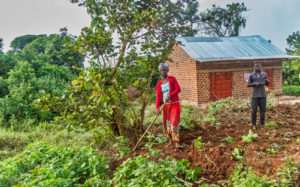 Village walks and visiting Craft Shops: The village walks provide opportunities to mingle with the locals as you learn about how they live and make ends meet. Many of the local people living close to the swamp practice subsistence farming. You can also go to one or two of the crafts shops to admire beautifully crafted bags, mats, baskets and huts. Most of these items are made with reeds got from the swamp. The swamp also provides herbs and building materials for local huts.
Village walks and visiting Craft Shops: The village walks provide opportunities to mingle with the locals as you learn about how they live and make ends meet. Many of the local people living close to the swamp practice subsistence farming. You can also go to one or two of the crafts shops to admire beautifully crafted bags, mats, baskets and huts. Most of these items are made with reeds got from the swamp. The swamp also provides herbs and building materials for local huts.
Visiting other spots in Entebbe: Entebbe is a small but beautiful town to tour. After birding at the Mabamba bay wetland, one can relax by the Lake Victoria or visit the Uganda Wildlife Education Center (zoo). Other great attractions include the virgin Ssese islands and the Ngamba Island chimpanzee sanctuary.
Conservation activities and the future of the Mabamba wetland
Hundreds of tourists visit Uganda each year with the sole purpose of spotting the Shoebill Stork. This has helped bring greater attention to their dwindling numbers and the need for their overall protection not only in Mabamba bay wetland but also in other locations within Uganda where they are found. The Mabamba swamp is not only home to the Shoebill stork but to over 200 other bird species. The swamp is also home to rare creatures like the Sitatunga antelope. Whereas these swamp antelopes are threatened by uncontrolled poaching, the greatest threat to the Shoebill Stork is habitat loss. The wetland continues to be drained by humans who are encroaching on it to put up houses and other infrastructure.
It is also worth pointing put that many Shoebills in Mabamba swamp were lost to fishermen in the past. Fishermen believed that encountering a Shoebill stork as they went to fish was a bad omen that would result in a poor catch. Some individuals used to steal Shoebill eggs and sell them in the black market. The designation of the place as a Ramsar site has resulted in greater protection of the birds. The government and other Wildlife conservation Agencies continue to sensitize the fishermen and communities living near the swamp about the importance of the wetland and wildlife to the overall eco-system. Through this sensitization, the community and fishermen have realized the great benefit of the swamp and creatures therein. The fishermen benefit greatly by renting out their boats to tourists. Because of their experience in the area, some of the fishermen have been trained as birding Guides. The economic benefits resulting from tourism has a turned the Shoebills into highly respected birds worth protecting.

